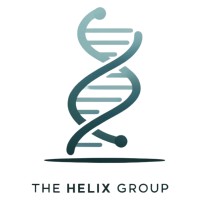Today’s Agile, DevOps and Agility transformation landscape is marked by widespread disillusionment. Organizations and practitioners alike are disenchanted with the continuous changes that haven’t delivered on their promises. Despite the low success rates of Agile transformations—falling between 10 to 20% compared to a historical average of 30% for other transformations—many in the Agile community remain in denial, failing to acknowledge the need for a different approach.
At The Helix Group, we’ve long advocated for a better way to handle transformations, and we’re beginning to see some practitioners take heed. A key issue is the confusion between “Change” and “Transformation.” Change involves a finite set of initiatives with a clear focus, while a Transformation is about reinventing the organization through a broad, interdependent and intersecting portfolio of initiatives aimed at discovering a new business model. It’s a riskier, more unpredictable process that requires a different mindset.
A common mistake is equating Agile frameworks like Scrum, Kanban, or SAFe with Agile itself. These frameworks represent change, but Agile is a transformation that demands a broader set of initiatives. In other words, implementing a framework like Scrum is a change and by not implementing the full portfolio of corresponding initiatives needed for a transformation you will continue to see the disenchantment with Agile.
Additionally, there’s a widespread misunderstanding of organizational alignment. True alignment means that the vision and strategies set by leadership cascade down to every level of the organization and then cascade back up through the work performed. Far too many in the industry hear the term organizational alignment and think themes, epics and stories, these are not organizational alignment.
Transformations, What’s Gone Wrong?
The classic signs of misalignment in organizations include being overwhelmed with meetings and emails, and employees expressing confusion over the adoption of Agile practices. Another critical aspect is organizational culture and behaviors. A transformation must begin with a baseline assessment of these elements and a plan to shift them accordingly, well before implementing any frameworks or tooling.
Furthermore, transformations require redefining roles and incentives to align with the new organizational vision. The sad truth is that most organizations are incentivizing their employees to resist change and transformations. Learning during a transformation also needs a shift in focus, with an emphasis on unlearning old ways before adopting new ones, a concept known as Active Inertia. The types of learning must also shift to reflect the need for learning agility.
For more insights and an in-depth discussion on transformations, feel free to reach out to us at The Helix Group.
Check out the Growth and Agility Skills Portrait (GRASP) from The Helix Group. Individuals can take the skills portrait for FREE and assess themselves on the 42 skills needed in a transformation.
Coming Soon
PIVOT – Assesses the seven dynamic attributes needed in a transformation by every organization.
ADAPT – The first of its kind, systemic immersive cohort based transformational learning agility program.


